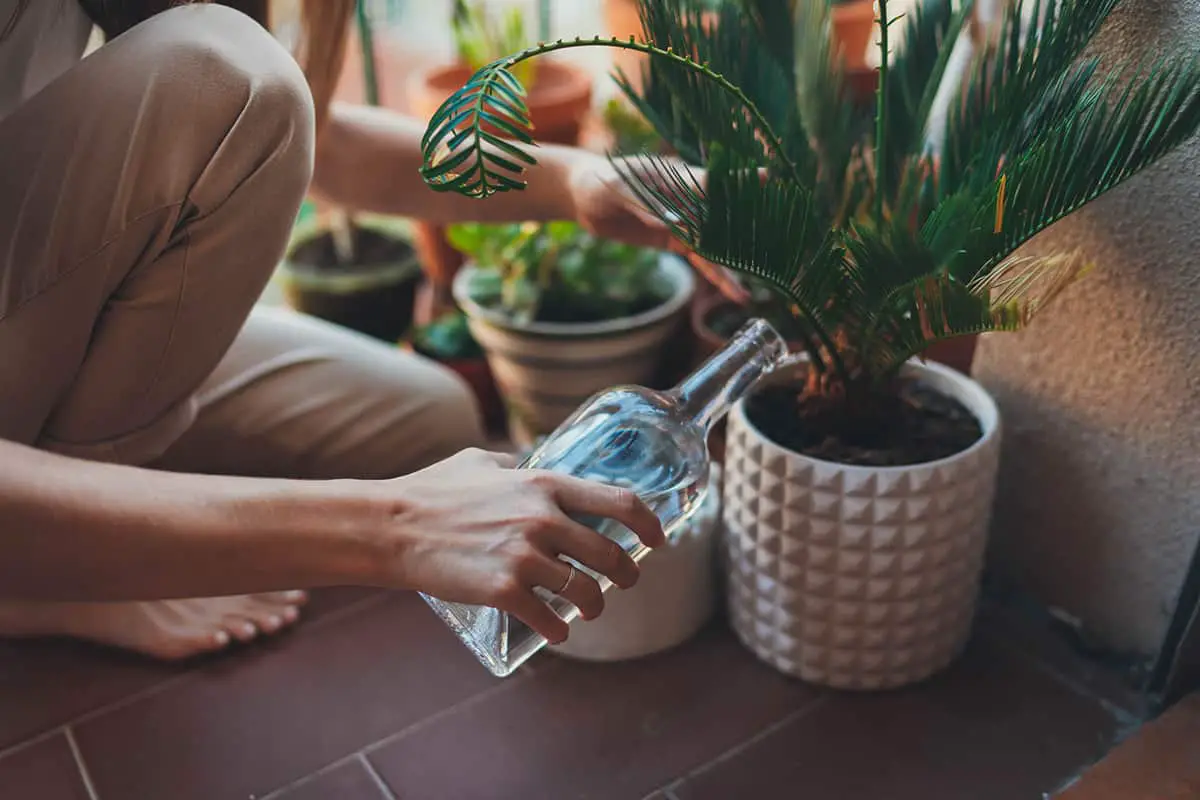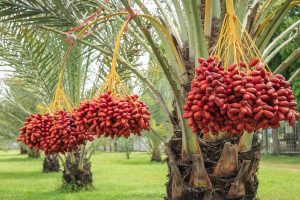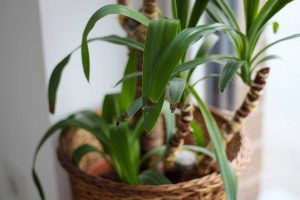Palms make great house plants because they hail from warm climates, which means they adapt well to typical indoor temperatures, and they bring a touch of tropical style to home decor. Most palms are easy to grow and require little attention. However, the one aspect of their care which is essential to get right is their watering. Here we explain how to ensure your palm gets the correct amount of water and stays healthy and thriving.
Palms are thirsty plants that need to be grown in moist soil. As a result, you can expect to water your indoor palm around twice a week through spring and summer and once every week or ten days through fall and winter. However, there are many different aspects that can affect how often an indoor palm should be watered, which we will investigate below.
Table of Contents
How Much Water to Give an Indoor Palm
There are thousands of species of palm trees, but most of them require similar levels of care when it comes to watering. There are some exceptions to this, so it’s important to be aware of the type of palm plant you have and if it has unusual requirements, but in general, you can expect to water all of your indoor palms in a similar amount and frequency.
Palms are thirsty plants and they don’t like to be kept in soil that gets dried out. This means that you need to keep on top of the condition of your palms’ soil by checking it every few days to see if you need to add more moisture. Your aim should be to keep the soil of the palm moist but not wet or waterlogged.
Though indoor palms love moist soil, they cannot thrive in soggy soil. For this reason, the type of soil you use will play an important role in the growth of your palm because it can affect how you water it.
There is no single answer to the question of how often or how much a palm needs to be watered because the size and circumstances of the palm will alter its watering needs. When thinking about the watering needs of an indoor palm, you need to consider:
The size of the palm
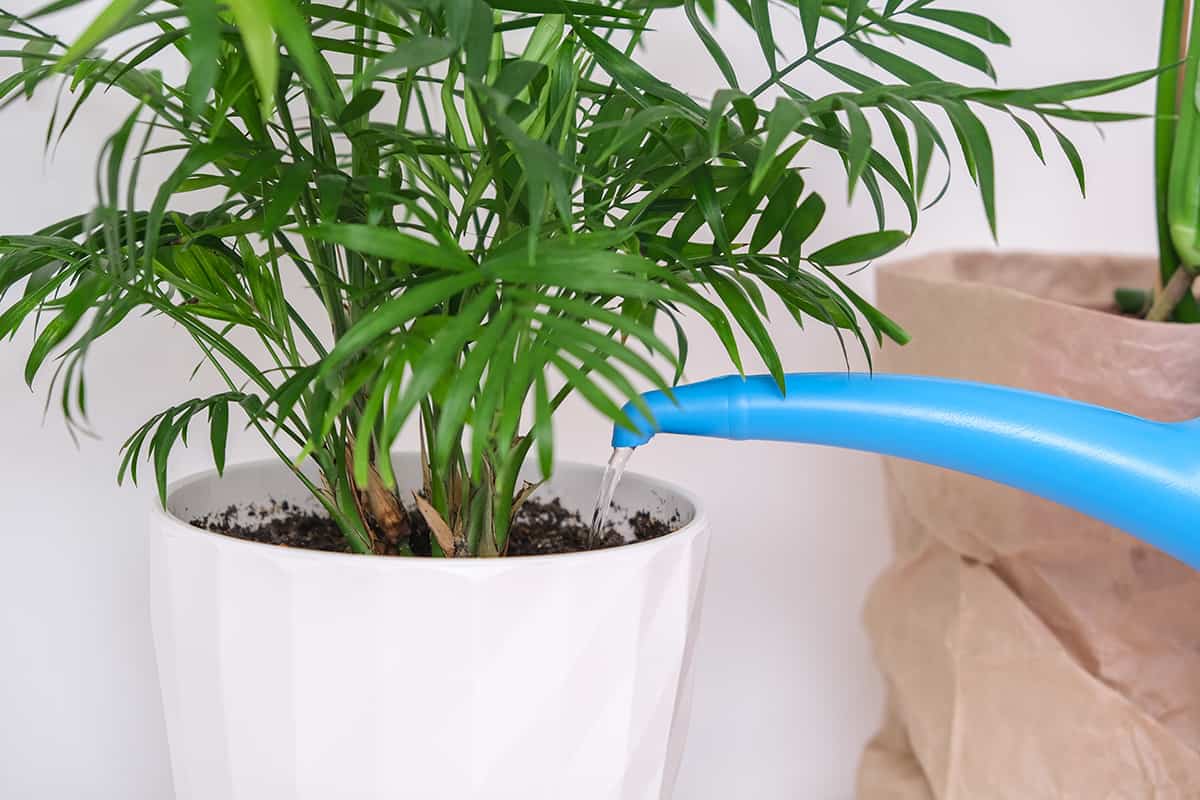
The size of the palm will, in part, dictate how much water you need to give the plant at a time, as well as the frequency of watering. Some experts recommend that the amount of water you give a palm should be equal to the size of the pot it is planted in.
For example, if the palm is growing in a 10-gallon pot, you should give it 10 gallons of water each time you water it. This will ensure that all of the soil gets thoroughly moistened, and there will be excess water that drains away, carrying with it any salts or additives that might accumulate in the soil.
The frequency of watering will be affected by the pot size because a smaller pot will dry out much more quickly than a larger pot, so this would need to be watered more often.
The light the palm receives
When a palm is in a position of full sun, or it receives bright light for the main portion of the day, it is going to need much more water than a palm that is kept in the shade.
The light your palm gets will change depending on the time of year, so this means you will need to alter your watering schedule depending on the season. In the summer, the palm will enter a period of growth and require more water, whereas in the winter it will have a rest period where less water is needed.
The humidity
Indoor palms which are in a humid environment, such as a bathroom, will not need as much water as a palm kept in a dry atmosphere. You can alter how much and how often you water your palm depending on the surrounding humidity.
Best Soil for an Indoor Palm
The soil for an indoor potted palm should be well-draining yet able to retain a reasonable amount of moisture. This is because palms have high water needs, yet they are susceptible to root rot.
A soil that drains well will help to prevent root rot, while the ability to retain moisture will hold water close to the roots so that the plant gets well fed. The ideal soil for indoor palms will contain sand or perlite to aid in drainage, as well as some organic matter to retain water. You can add these elements to a regular indoor potting soil mix.
A balanced soil of these components will not be vulnerable to compaction, further ensuring that sir can reach the roots and they can continue to absorb moisture and nutrients effectively.
How to Check if an Indoor Palm Needs Water
It is always best to water an indoor palm according to the condition of the soil rather than according to a schedule. To check if your indoor palm needs watering, dip your finger into the soil, and if the top inch of the soil has dried out, then you can go ahead and water the plant.
If the top inch has not yet dried out, wait another day or two before checking the soil again and potentially adding water. Checking the soil before watering will prevent the occurrence of overwatering and root rot while also ensuring the palm gets the moisture it needs.
Best Watering Practices for Indoor Palms
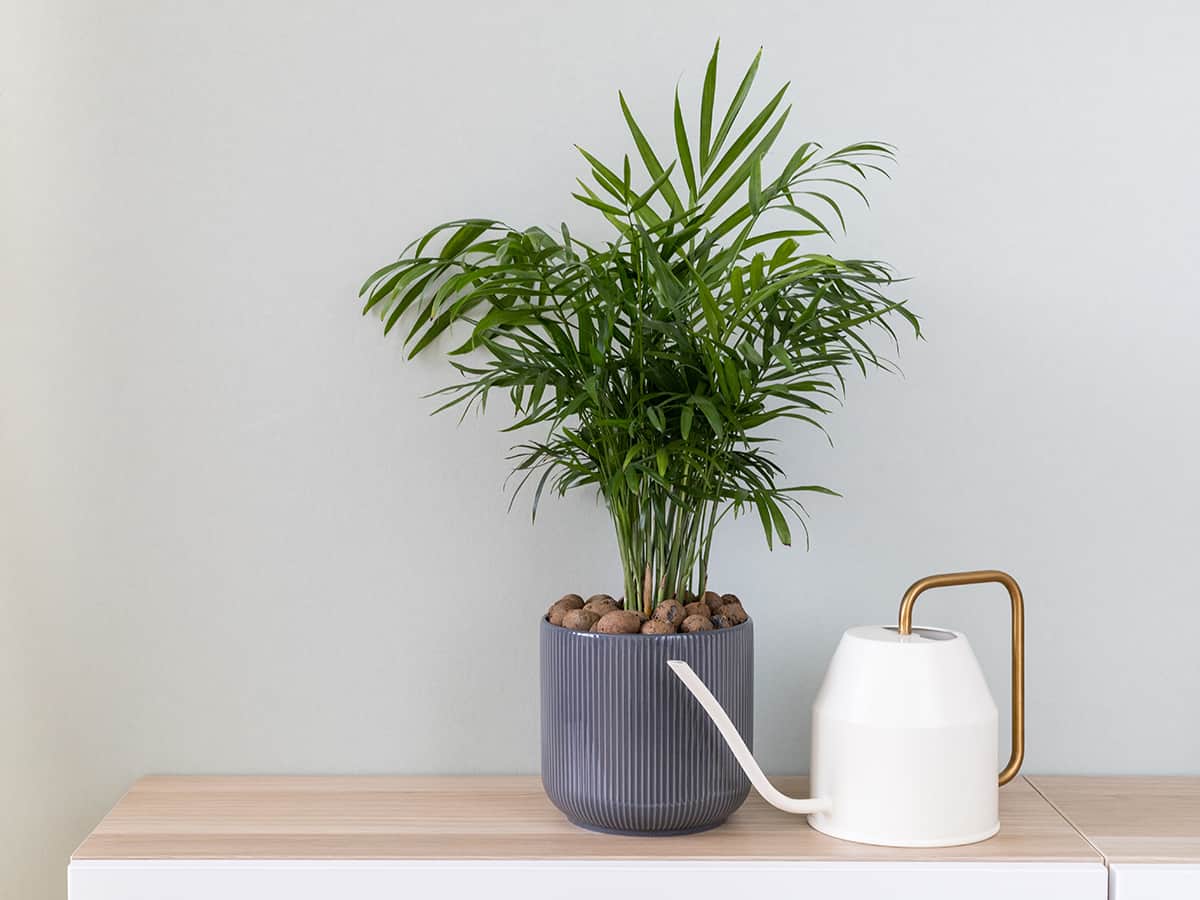
The soil of your palm will need to be checked every 3 or 4 days during the spring and summer and every 7 to 10 days through autumn and winter to assess if it needs watering. You can expect that most indoor palms will need to be watered twice a week during the growing season and just once a week or less through the dormant season.
When watering a palm, do so heavily, deeply, and slowly. Pour water across the top surface of the soil, especially around the main trunk or stem, and wait for the soil to absorb it. Keep watering, allowing all of the excess water to drain through the drainage holes at the base of the pot. Depending on the size of the pot, you may need to wait up to an hour for all of the excess water to drain, and at this point, you can discard the excess water so that the plant isn’t left in standing water.
Are Indoor Palms Drought Tolerant?
Most types of palms are thirsty plants that need to be grown in consistently moist soil, and if you aren’t able to meet this requirement, then you may find that your palms’ growth slows down and the tips of the fronds turn brown. However, there are some varieties of palm which have little tolerance for dry conditions, including the Kentia Palm (Howea forsteriana) and the Chinese Fan Palm (Livistona chinensis).
Both of these palms can survive short periods of dry soil. However, they can sustain irreparable damage in sustained periods of drought, so it is best to keep their soil moist where possible.
